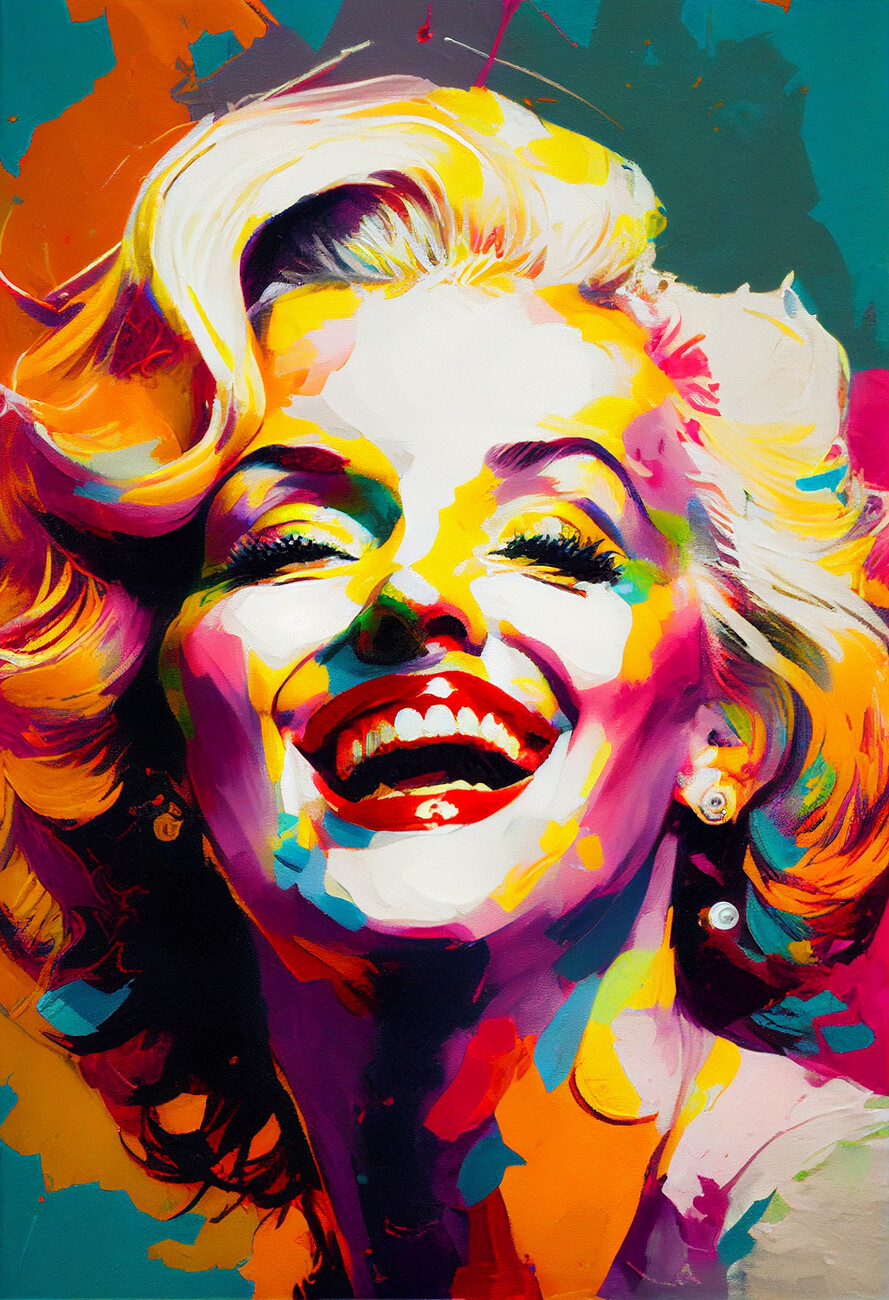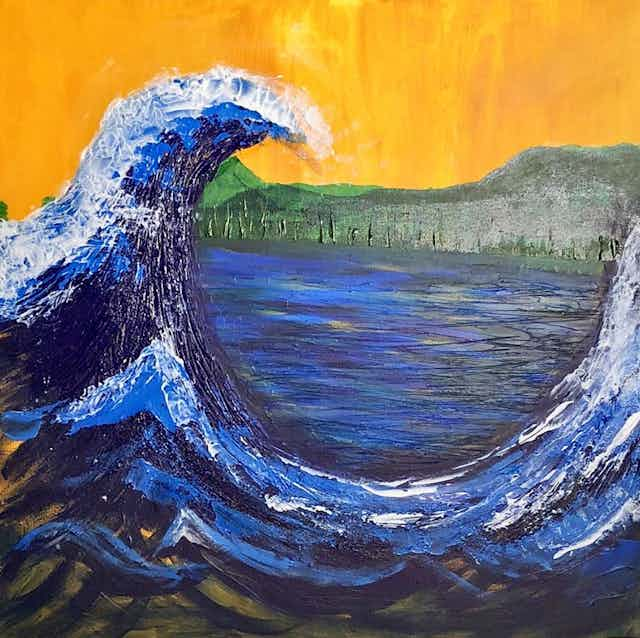Starting a Visual Trip Via the Lyrical Analyses of Nature in Stylist Landscapes
Each brushstroke, each play of light and darkness, and each color choice in their jobs speaks volumes concerning the artists' deep connection to nature and their capacity to equate its charm onto the canvas. As we explore the lyrical analyses of nature in Stylist landscapes, we are invited to submerse ourselves in a globe where reality and feeling link, offering a glimpse right into the musicians' extensive gratitude for the all-natural globe.
The Captivating Brushstrokes of Claude Monet
Claude Monet's mastery of brushstrokes transcends plain technique, imbuing his landscapes with an ethereal top quality that mesmerizes and captivates audiences - trump art. His cutting-edge usage of shade and light, integrated with his distinct brushwork, creates a sense of movement and life within his paintings. Monet's popular collection of works illustrating water lilies and his iconic haystacks display his ability to catch the short lived effects of light and environment

Embracing Light and Darkness With Camille Pissarro
Symbolizing a comparable reverence for the interplay of light and shadow, Camille Pissarro's creative vision unfolds as a harmonious exploration of the all-natural world's luminescent nuances. Pissarro, a crucial number in the Impressionist motion, masterfully recorded the vibrant connection in between light and shadow in his landscapes. His proficient use of shade and brushwork allowed him to share the subtle changes in light that define various times of day and seasons.
Pissarro's paints frequently feature spotted sunshine infiltrating leaves, casting elaborate patterns of light and shadow on the planet below. In works such as "Hoar Frost, the Impact of Snow, Pontoise," Pissarro skillfully shows the crisp illumination of winter season sunshine compared with the awesome shadows that define the snowy landscape. By accepting both light and darkness in his make-ups, Pissarro invites audiences to submerse themselves in the all-natural charm and transient results of light in the globe around them.

With Pissarro's works, we are advised of the transformative power of light and darkness, inviting us to stop and appreciate the fleeting moments of charm present in the daily landscapes that border us.
A Harmony of Colors by Edgar Degas
Edgar Degas orchestrates a vivid symphony of colors in his masterful artworks, instilling his compositions with a vibrant interplay of shades that mesmerize the viewer's look. Understood mostly for his ballet professional dancers and intimate scenes of Parisian life, Degas adeptly adjusted shades to communicate mood and movement in his paintings. trump art. His use of bold, contrasting colors and subtle tonal you could try these out variants developed a sense of deepness and vibrancy within his jobs
Degas' color palette frequently contained abundant blues, deep greens, and warm oranges, which he applied with confident brushstrokes to record the essence of his subjects. Whether portraying a ballerina mid-performance or a team of buddies speaking at a coffee shop, Degas' shades not just illustrated the scene but also stimulated a sense of feeling and power.
Additionally, Degas' testing with light and shadow included an extra click this link layer of complexity to his shade structures, enhancing the total ambience of his paintings (trump art). With his skilled control of shade, Degas created an aesthetic harmony that remains to resonate with viewers today
Exploring Nature's Peacefulness With Berthe Morisot
Berthe Morisot's imaginative vision uses a tranquil departure from the vibrant shade symphonies of Edgar Degas, as she records the tranquility of nature in her expressive landscapes. Understood for her delicate brushwork and intimate portrayals of day-to-day life, Morisot's landscapes show a feeling of peace and harmony.
Morisot's paintings usually feature soft, low-key tones that share a feeling of calmness and peacefulness. Her works, such as "The Cradle" and "Summer season's Day," display her ability to catch the refined appeal of nature in such a way that is both contemplative and comforting to the viewer.
Unlike a few of her Stylist equivalents who concentrated on dynamic compositions and strong shades, Morisot preferred to produce mild, reflective scenes that welcome the audience to pause and reflect. With her masterful usage of light and darkness, Morisot creates a sense of peace that resonates with the customer on a deep psychological level.
The Emotional Landscapes of Vincent Van Gogh
Vincent Van Gogh's landscapes clearly communicate a deepness of emotion through their dynamic brushwork and expressive use color. The Dutch post-impressionist artist is renowned for his capability to record raw and intense emotions in his paintings, transcending standard depictions of nature. Van Gogh's troubled individual life, noted by psychological wellness battles, greatly influenced his art, infusing his landscapes with a sense of unease, melancholy, or enthusiasm.
In jobs such as "Starry Night" and "Wheatfield with Crows," Van Gogh's swirling brushstrokes and vivid color selections evoke an extensive psychological feedback from visitors. The rough skies and agitated landscapes in his paints show his inner turmoil and emotional disturbance, welcoming customers look at this web-site to look into the complexities of his psyche.
Van Gogh's unique aesthetic language, identified by overstated point of views and strong use of shade, develops landscapes that reverberate with customers on a deeply emotional level. Via his art, Van Gogh welcomes us to see nature not just as an external reality yet as a mirror of our innermost sensations and feelings.
Final Thought
To conclude, the impressionist landscapes of artists such as Claude Monet, Camille Pissarro, Edgar Degas, Berthe Morisot, and Vincent Van Gogh offer a one-of-a-kind and exciting visual interpretation of nature. Through their use brushstrokes, emotion, shade, and light, these artists have developed a symphony of photos that evoke a feeling of tranquility and appeal in the natural globe. Their works remain to influence and enchant visitors with their lyrical interpretations of the landscapes around us.
Each brushstroke, each play of light and darkness, and each shade option in their jobs speaks volumes concerning the artists' deep connection to nature and their capacity to translate its appeal onto the canvas. His cutting-edge use of color and light, incorporated with his distinct brushwork, creates a sense of motion and life within his paints. His proficient usage of shade and brushwork allowed him to convey the subtle changes in light that specify various times of day and seasons.
